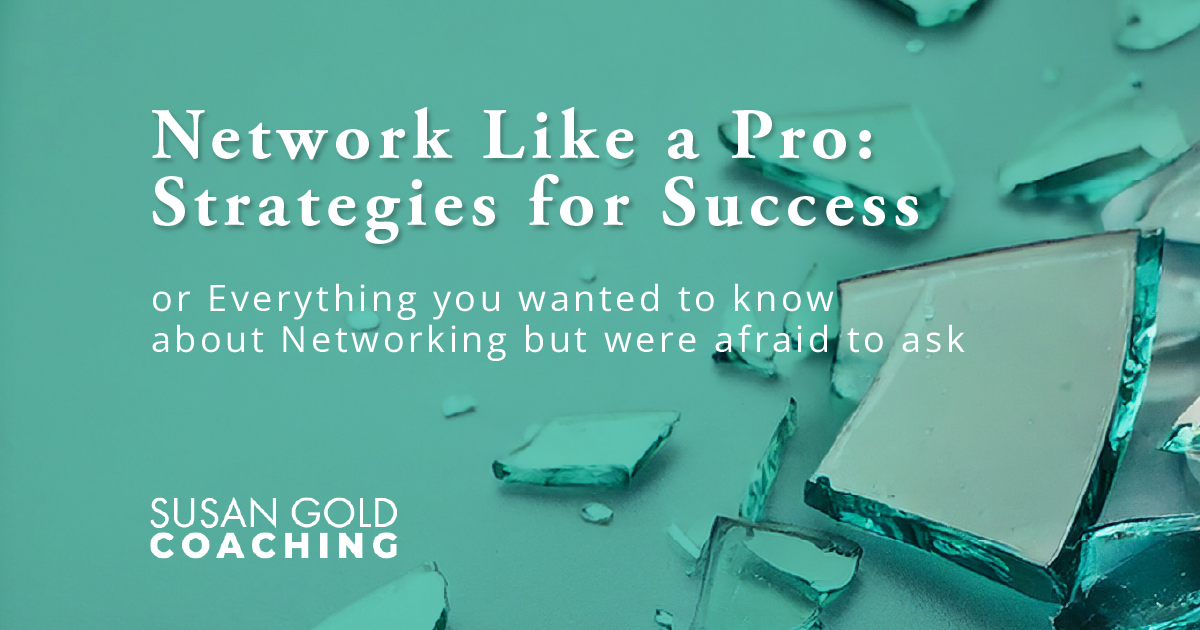Is Your Networking a Waste of Time or a Prospect Feeder?

Every Thursday morning at 7:30am you show up either virtually or in person, a big smile on your face, your giant Yeti thermos full of coffee in one hand and your name badge in the other, ready to greet your networking buddies. Then you realize: Damn, I didn’t prepare my 30 second “elevator pitch.”
Been there? How’s that working out for you and your business?
Networking can be a colossal waste of time, never mind the membership and room fees, the weekly or monthly meetings that create even more commitments, like the one-to-ones, committee meetings, social events, and more.
Time is money – we know that but we often don’t think about the total amount of networking time that eats up our calendar faster than you can empty your Yeti.
Don’t Just “Show Up”
Here’s the thing: the ROI on networking isn’t really just client revenue divided by the membership fee. Rather, it’s ALL that time you invest that needs to be counted to get a true picture of the return on your networking time.
Frankly, when there isn’t a strategy that guides you to use networking time effectively, well, then it’s “social hour” and not business development time.
I’m often shocked when I ask professionals how their networking is going and they reply, “Well, I like the people but, honestly, I haven’t gotten any clients.” And this is after a few years – not just months – of showing up regularly with no results.
Being in the “wrong room” is a common issue but it can be hard to leave a room that has become a comfortable routine because it’s welcoming. You make friends and the meetings themselves are sometimes even fun. But really—if you want friends, join a book club or go to a local meet-up.
If you want business in return for your investment of time, you need to do something different.
There Must Be a Better Way!
Yes, there is: create a networking strategy! It’s easier than it sounds and it has the potential to change your business significantly. But to start, let’s acknowledge the first (if unspoken) rule of networking: You have to give before you can receive.
Helping others to connect with key introductions is how we build relationships and in turn, encourage others to give back. And it takes time to know, like and trust – any basic networking training has taught us these core concepts. What we typically don’t learn is how to build a networking strategy.
The first step is to be very clear on who your Ideal Clients are. Read more about identifying your Ideal Clients in this article or download my PDF.
You might think your business is “agnostic,” meaning you can help any person or any business in any industry. While that may be accurate, it doesn’t make for effective networking, or marketing for that matter.
Putting you and your company out there as “all things to all people” or saying, “we can do that!” may be true but doesn’t help people to know what a good referral would look like.
Clarity is key in order to trigger ideas for your networking partners to think about the best connections for you. You need to help your networking partners help you.
And to help you in the process, here’s a guide to developing your networking strategy.
1. Identify Your Ideal Client Types and Their “Strategic Partners”
Start with understanding your best clients – not all clients are created equal, right? We’ve all had fabulous clients and the not-so-fabulous. Ideal Clients are high revenue producers and profitable, as well as being a great fit for your business.
The descriptors that define a great client can change over time as you determine who you enjoy working with and which clients value you, which means you need to keep an eye on how that changes.
It’s also important to understand the trusted advisors that work with your targeted Ideal Clients. These strategic partners may have ongoing relationships with your targets, working with them before or after you do. A few examples include attorneys, accountants, and business consultants. They’re important to know because as you build relationships and create a foundation of trust, you can become the “go-to” as they become “feeders” for your business development efforts.
2. Develop Your Prospecting List
The membership directory of your networking organization or industry association is a goldmine to be tapped. Not everyone is equally important to your business, which means you need to pull out the highest quality connections that you want to meet. Developing a well-defined prospecting list of these key connections is an effective, proactive way to create a business development asset.
Instead of spending time and money sending marketing messages out to capture and build contact lists, you’ll be creating a strategically targeted list. Using key search terms, titles, and defined industries, you can search the directory for your Ideal Clients and Strategic Partners to develop your Strategic Prospecting List. This is one of the most underutilized business development action items, but it’s a critical success factor for solid networking.
This effort is also a great test of being in the “right room.” If you are not finding who you need in the directory, either as actual prospects for your business or the trusted advisors and partners that work with the same targets, then you should consider a different networking organization or industry association.
3. Make a Strategic “Ask”
When you’re in a networking meeting of 20-30 or more professionals who are all introducing themselves and talking about what they do, it can be overwhelming and hard to keep track of, as all the information flows in and out of your mind. You want to use your time wisely when you have the opportunity to speak to break through the information overload.
When you know exactly who you want to meet because you’ve created your Prospecting List, you will want to specifically mention them by name, by title, by company, and by industry. This creates multiple triggers for potential connections.
When you ask to meet “John Smith, COO of ABX Company, a manufacturing firm located in Boston, MA,” you increase the likelihood that someone in the room might know John, or a COO of another, similar manufacturing company, or someone else in that Company, or another manufacturing firm in that area.
You often get what you ask for, which can be surprisingly effective. Or not, if you don’t tell people what you want!
4. Be in the Right Room
Consistency is key. It can take 9-12 times for others to start remembering who you want to be introduced to. If you are not getting results for your networking effort and time, it can be any of the pieces to the networking puzzle. You might not have a clear ask. Sometimes, the networking partners in the room don’t have the right connections in their network for your needs, or they don’t have the exposure to grow their network.
It does take time, even with a networking strategy, to get your message across. But if there are no results within 6-8 months, consider making a change.
5. Use Follow Up Tools
Having a great coffee together in a one-to-one meeting, sharing your background, and making your ask doesn’t always result in what you need. Following up with an email thanking the person for their time, confirming any introductions you are going to make, and reinforcing who you are looking to meet, is another touchpoint to reinforce your focus.
Using a networking one-pager is an effective tool to summarize who you are, who you want to meet, what issues your targets have and how to best introduce you. Download my networking one pager and repurpose it for your use.
6. Track & Measure
I have a philosophy about tracking networking activity. If you can track your networking in your daily planner or a spreadsheet, you are not meeting enough people! Using a CRM (customer relationship management software), you can determine who is introducing you to the best prospects and clients. Tracking the referral organization is key to determining whether you want to renew your memberships and continue to invest time or move on.
For my metrics nerd readers, you can track how many one-to-one meetings you have and the number of referrals you receive (one-to-one to referral ratio), then how many referrals result in a client (referral to win ratio). This approach will give you a sense of how many one-to-ones it takes to achieve a targeted revenue amount.
Conservatively, using a 35-40% ratio for both metrics will give you a sense of how many one-to-ones you need to have to achieve your networking revenue goals. This is a common disconnect for networkers: not enough networking activity to give them the desired results.
Feed the Flow
Networking seems easy – you show up and business flows. If only… On the other hand, if you are in the right room and you have a strategic ask, then you start increasing your business development odds in your favor.
If your networking isn’t producing results, make sure you have a networking strategy. And when you do, test it regularly. Being in the wrong room is an expensive way to get a cup of coffee.



